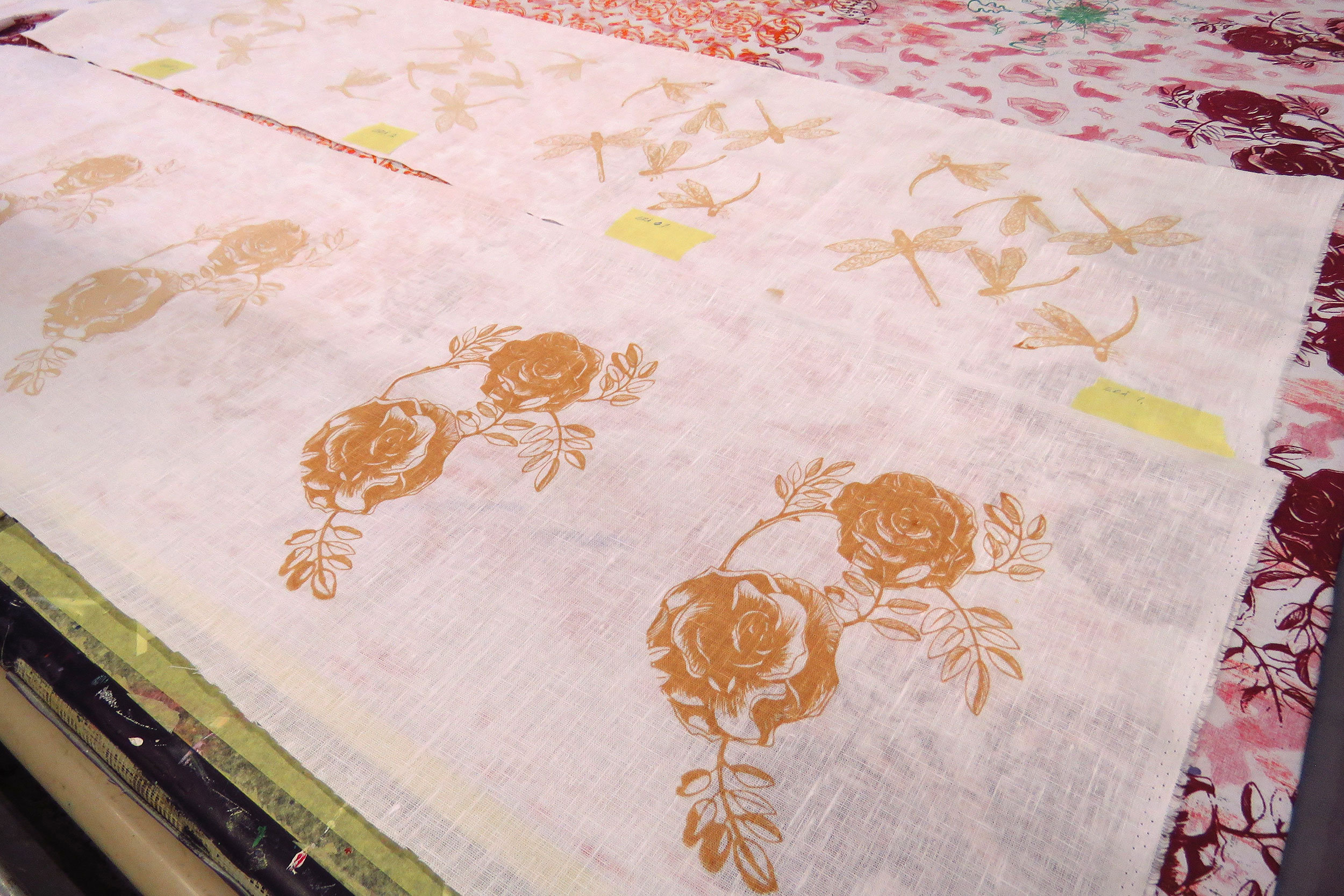Thesis: a substance extracted from the bark of conifers produced a uniform colour in fabric printing

In the thesis, new value-adding applications were sought for the largest by-product of the sawmill industry, bark, in the form of dyes. The dye extracted from both spruce and pine bark produced an even and strong colour in the fabric printing process and showed good light fastness in the accelerated light fastness test.
Bark is the most common by-product of the sawmill industry, most of which is currently used directly for energy production, although cascading (efficient reuse of biomaterials for high added value) would increase the value of the bark and prolong the life of the carbon sequestered in it. Roosa Helander’s thesis for the Bioeconomy Solutions Masters degree at Häme University of Applied Sciences explored potential value-adding applications for this side stream.
Among other things, tree bark contains tannins. Tannins are characterised by their strong colour, which creates potential for the use of bark as a dye. In addition, the dye industry uses a large amount of raw materials of fossil origin, so a shift to the use of side streams as a source of dyes would reduce the need to use these raw materials.
In Helander’s study, the bark of spruce, pine and birch trees was extracted using a laboratory-scale hot-water extraction method, after which the yield was determined and the extracts were spray-dried to a powder. For comparative drying, the extracts were freeze-dried. The study compared the light fastness of dyes extracted and spray dried from different wood species in textile printing inks.
The result: a useful, scalable method
The results showed that hot water extraction and spray drying are viable and scalable methods for extracting dyes from tree bark. Spruce and pine produced a uniform and strong colour in the fabric printing application, and no significant differences in colour fastness were observed between them. Birch was not as efficient in extraction and it was not practical to prepare dye powder from it. Prints pigmented with both spruce and pine dyes showed good colour fastness in the accelerated light fastness test. The study concluded that bark binder from northern forests can provide a basis for the development of bio-based dyes.
The thesis is in the form of an article thesis, which resulted in one professional publication and one peer-reviewed publication. The work was carried out as part of the European Regional Development Fund co-funded Centre of Excellence in Bio-based Materials (BIO-OSAKE) project.
The thesis is available in full in Theseus.
More info:
Roosa Helander, student, Bioeconomy Solutions / Project engineer, HAMK Tech Research Unit, Häme University of Applied Sciences, tel. 0504523684 roosa.helander@hamk.fi
